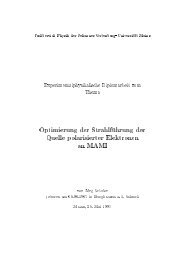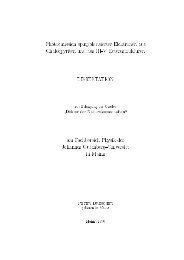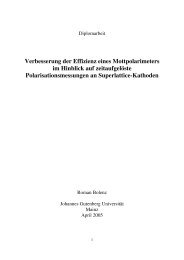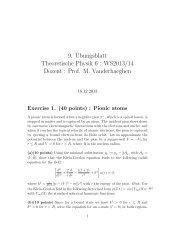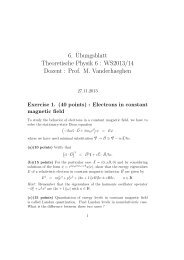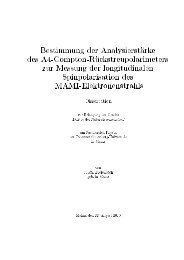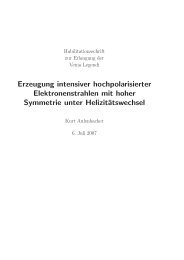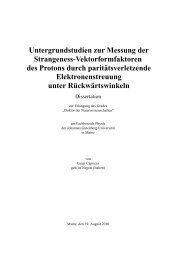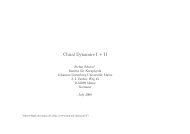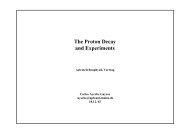EFFECTIVE FIELD THEORIES FOR VECTOR PARTICLES AND ...
EFFECTIVE FIELD THEORIES FOR VECTOR PARTICLES AND ...
EFFECTIVE FIELD THEORIES FOR VECTOR PARTICLES AND ...
Create successful ePaper yourself
Turn your PDF publications into a flip-book with our unique Google optimized e-Paper software.
MASSIVE <strong>VECTOR</strong> <strong>PARTICLES</strong> IN THE<br />
ANTISYMMETRIC TENSOR MODEL<br />
6<br />
This chapter presents a detailed analysis of the antisymmetric tensor<br />
model for three massive vector particles including the interaction terms<br />
with coupling constants of mass unit eV 1 and eV 0 . First, all available<br />
Lorentz structures relevant to three- and four-field interactions are derived.<br />
Consequently, the U(1) invariance is employed to reduce the<br />
number of free coupling constants. Next, a constraint analysis is used to<br />
impose self-consistency on the coupling constants. Finally, conditions<br />
for the renormalizability of the theory are calculated.<br />
6.1 available lorentz structures of the interaction<br />
terms<br />
From the Lagrangian density of the free tensor model in equation (4.7)<br />
on page 30 with mass unit eV 4 one derives 1 that the antisymmetric tensor<br />
field W µν has mass unit eV. Using the fact that all Lorentz indices in the<br />
interaction terms must be completely contracted, interaction terms with<br />
coupling constants possessing mass unit eV 1−n , where n = 0, 1, 2, . . . ,<br />
can be constructed. In the following, all available Lorentz structures for<br />
the cases n = 0, i.e. three fields, and n = 1, i.e. four fields, are motivated.<br />
Note that the derivative operator ∂ µ —with mass unit eV—needs not to<br />
be taken into account since possible terms<br />
(1) must contain an even number of derivatives,<br />
(2) must not represent a total divergence, and<br />
(3) must not be equal to the kinetic term.<br />
The Case n = 0: Three Fields<br />
A general interaction term has the form of a rank-six tensor<br />
W a α 1β 1<br />
W b α 2β 2<br />
W c α 3β 3<br />
, (6.1)<br />
1 The parameters a and b in equation (4.7) are dimensionless in order to be consistent<br />
with the fundamental commutation relations in canonical quantization.<br />
43



